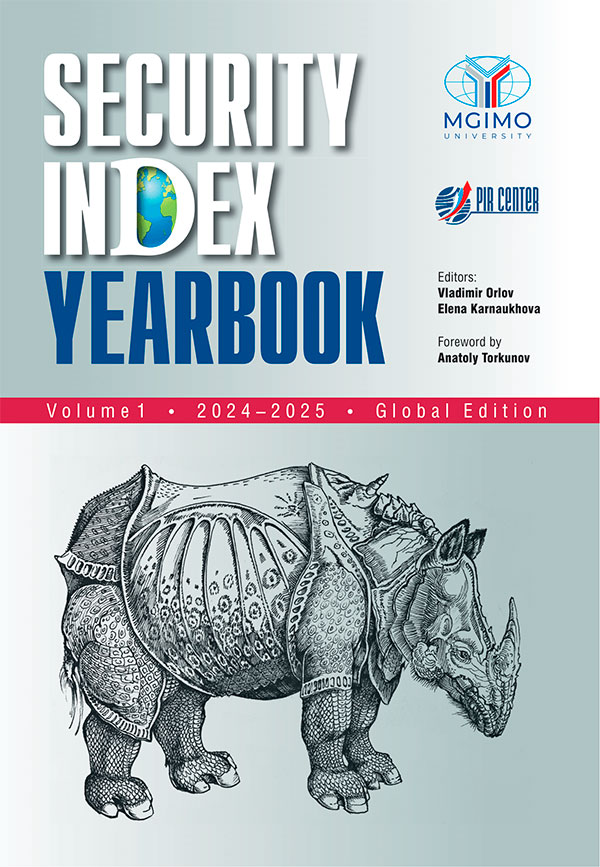... an unprecedented debate within Russian expert and political circles regarding the possible use of nuclear weapons in the context of the armed conflict in Ukraine. In 2024, this debate centered on amendments to Russia’s official Military Doctrine on nuclear deterrence, which were promulgated in November of that year. The issue gained even greater urgency following the victory of Republican candidate Donald Trump in the U.S. presidential election in November. These developments will have a tangible ...
... possible use of nuclear weapons by non-nuclear forces. This trend is particularly evident in the interaction between Washington and Seoul, which established the Nuclear Consultative Group and approved (on the margins of the NATO summit) the Guidelines for Nuclear Deterrence and Nuclear Operations on the Korean Peninsula.
New coalition and alliance constructs resembling NATO are taking shape: AUKUS, new formats in Northeast Asia between the United States, South Korea, and Japan emphasizing space infrastructure....
... Pentagon’s desire to create a broad regional missile defense infrastructure in Asia Pacific to meet the country’s unique nuclear deterrence needs [
5
]. Notably, no country of East Asia, in whole or in part, has ever expressed its intentions to unprovokedly ... ...
estimated
by the US Naval Institute (USNI), the total number of SM-3 interceptors of different versions is 265 with more than a thousand
SM-6
interceptors for destroying targets in the atmosphere at a distance of up to 370 km. The U.S. Navy’s 7th Fleet alone,...
... crisis that heightened the risk of a direct military confrontation between the two nuclear-capable states.
Russia’s and the USA’s escalation strategies and potential nuclear escalation risks
In June 2020, Russia and the U.S.
agreed on expert-level ... ....S. have designated hypersonic missiles and UAVs as pressing military threats. Russia’s ‘Fundamentals of State Policy on Nuclear Deterrence’ (2020)
stipulates
that adversary missile defence capabilities, hypersonic systems and strike-capable UAVs ...
... to the proposal made at the meeting with soldiers’ mothers.
Labyrinths of escalation
Alexander Yermakov:
The Nuclear Triad: Alternatives from the Days Gone By and Possible Futures
However, there might be even a third motive for the President’s refusal. It fact nuclear deterrence is aimed at preventing a number of other threats, besides nuclear aggression, and this implies a first use of Russian nuclear weapons rather than a retaliatory one. In particular, the Military Doctrine of the Russian Federation provides ...
Policy Brief #44 / 2022
Policy Brief #44 / 2022
In October 2022, Joseph Biden’s administration published the new U.S. Nuclear Posture Review (NPR-2022) as part of a single National Defense Strategy (NDS-2022) package along with the Missile Defense Review (MDR-2022). The previous Nuclear Posture Review appeared in February 2018 during Donald Trump’s presidency.
One of the key functions of any publicly available strategic document is to deliver information to other states – both friendly and hostile...
Of all the “official” nuclear powers, the UK arguably displays the most peculiar approach to nuclear deterrence
Of all the “official” nuclear powers (Russia, the US, France, the UK, China), the UK arguably displays the most peculiar approach to nuclear deterrence. Here, we will outline the most salient details, assess the prospects, and ...
... considered positive. The United States (if freed from the burden of having to explain its actions) directly raised the question of “usable” nuclear weapons, that is, a battlefield capability, and not an instrument of strategic deterrence. Thus, the image of ... ... without any chance of recovery. Concerning the real influence highly unlikely events with a highly significant effect have on nuclear deterrence, see: Yarynich V. E.
C3: Nuclear Command, Control, Cooperation
. Washington, DC: Center for Defense Information,...



